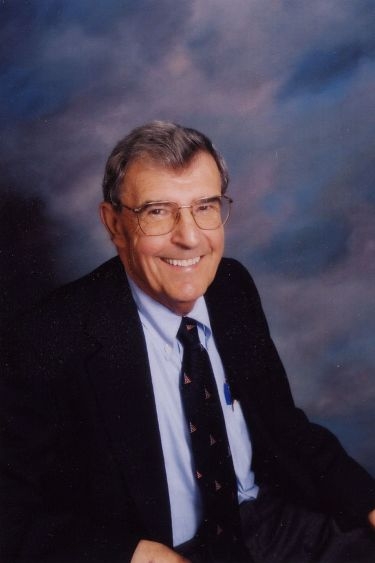J. Robert Beyster*
Class of 2008
- Retired Chairman and CEO Science Applications International Corporation (SAIC)

Look for role models and participate willingly in your education.
J. Robert Beyster was born in Detroit in 1924 and grew up in Grosse Ile, Michigan. He and his parents lived in a rented duplex flat, with his grandparents living in the flat below. Although not a college graduate, Beyster's father was a gifted designer and builder. He and a partner built high-end homes in Detroit and had a thriving business, but when the Great Depression struck, and they lost the business. For many years, his father did small design and construction jobs before finding work at General Motors.
Beyster attended Slocum Truax High School in Trenton, Michigan, and was salutatorian of his graduating class. When the United States entered World War II, Beyster enlisted in the U.S. Navy. He was sent to college at the University of Michigan, where he enrolled in the V12 Officer Training Program. He was commissioned as an ensign and eventually served on a destroyer based in Norfolk, Virginia, before leaving the service six months later.
Beyster received a bachelor of science degree in engineering and physics in 1945, a master's degree in physics in 1947, and a doctorate in physics in 1950, all from the University of Michigan.
In the early 1950s, Beyster worked briefly for the Westinghouse Atomic Power Division on the company's nuclear submarine program, before following many of his college associates to New Mexico to work as a research physicist at Los Alamos National Laboratory. In 1957, he relocated to San Diego to chair General Atomic's Accelerator Physics Department. He left that company in 1968, when it was purchased by Gulf Oil.
In 1969, Beyster invested the proceeds from sale of stock in General Atomic, combined with funds from other early employees, to start Science Applications, Inc., which was later renamed Science Applications International Corp. (SAIC). Initially, its focus was on U.S. government projects related to nuclear power and weapons effects study programs. Beyster designed SAIC so that ownership of the company and profits belonged to its employees. Those benefits were accompanied by shared responsibility and freedom in business development. SAIC retained intelligent, motivated entrepreneurs who helped the company to grow and diversify.
SAIC eventually became the largest employee-owned research and engineering company in the United States. Beyster was CEO until 2003 and chairman of the board until his 2004 retirement. A recognized authority on national security and reactor physics, Beyster committed 35 years of his life to building SAIC on the founding tenets of employee ownership and technical excellence. He extended this commitment to the American business community by founding two nonprofit organizations to assist organizations considering employee ownership: the Beyster Institute and the Foundation for Enterprise Development. By the time Beyster retired in 2004, SAIC had annual sales of $6.7 billion and more than 43,000 employees.
Beyster wrote or co-authored about 60 publications and reports, including The SAIC Solution: How We Built an $8 Billion Employee-Owned Technology Company, published in 2007. Beyster served on a scientific advisory group for the Joint Chiefs of Staff and belonged to the American Nuclear Society, the American Physical Society, and the National Academy of Engineering. He received the Engineering Manager of the Year Award in 2000 from the American Society of Engineering Management, the 2001 Spirit of San Diego Award from the San Diego Regional Chamber of Commerce, the Lifetime Achievement Award from Ernst & Young in 2003, a lifetime achievement award from the University of California, and the "Supporter of Entrepreneurialism" award from Arthur Young and Venture magazine.
In 2006, the San Diego Regional Economic Development Corp. recognized Beyster with its Herb Klein Civic Leadership Award for his outstanding leadership in addressing regional challenges through collaboration with public, private, and civic partners.
